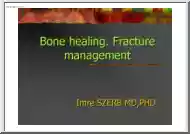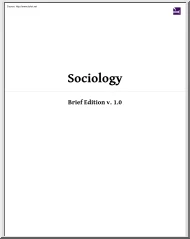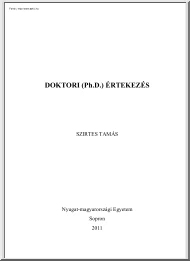Datasheet
Year, pagecount:2010, 4 page(s)
Language:English
Downloads:4
Uploaded:June 26, 2023
Size:515 KB
Institution:
[USC] University of Southern California
Comments:
Attachment:-
Download in PDF:Please log in!
Comments
No comments yet. You can be the first!Content extract
Source: http://www.doksinet 2 STOCHASTICS AND DYNAMICS SCHEDULE. Abstracts. Kenneth Alexander (University of Southern California) Disorderedpolymer depinning transitions: An overview. We consider a polymer with configuration modeled by the trajectory of a Markov chain, interacting with a potential of form u + Vn when it visits a particular state 0 at time n, with {Vn } representing i.id quenched disorder There is a critical value of u above which the polymer is pinned by the potential. The main question of interest is, how does this depinning transition differ from the one in the annealed model, where the interaction is effectively homogeneous in n? The most important element is the distribution of the return time to 0 for the underlying Markov chain, and one would like to characterize those return-time distributions which do and do not result in different critical exponents, or critical points, for the quenched vs. annealed model. This problem is much better understood than it was
5 years ago, though many questions remain open. We will give an overview of some recent results. Yura Bakhtin (Georgia Tech) Scaling limits for exit distributions. Exit problems for stochastic perturbations of dynamical systems under vanishing noise limit will be considered. The emphasis will be on several situations where the exit points and exit times obey distributional scaling limits. Connections with sequential decision making and nonequilibrium statistical mechanics will be discussed along with some experimental and numerical data. Some of the results are joint with Sergio Almada. Guillaume Bal (Columbia) Equations with random coefficients: Convergence to deterministic or stochastic limits and theory of correctors Equations with small scale structures abound in applied sciences. Such structures often cannot be modeled at the microscopic level and thus require that one understand their macroscopic influence. I will consider the situation of partial differential equations with
random, highly oscillatory, potentials. One is then interested in the behavior of the solutions to that equation as the frequency of oscillations in the micro-structure tends to infinity. Depending on spatial dimension and the decorrelation properties of the random potential, I will show that the limit is the solution to either a deterministic, homogenized (effective medium) equation or a stochastic equation with multiplicative noise. More precisely, there is a critical spatial dimension above which we observe convergence to a deterministic solution and below which we Source: http://www.doksinet STOCHASTICS AND DYNAMICS SCHEDULE. 3 observe convergence to a stochastic solution. In the former case, a theory of correctors to homogenization allows one to asymptotically capture the randomness in the solution to the equation with the small scale structure. Once properly rescaled, this corrector is shown to solve a stochastic equation with additive noise. Mike Cranston (University of
California at Davis) Some results on polymers, phase transitions, overlaps. We will discuss some results on the behavior of homo-polymer models near the phase transition from a globular to a diffusive state. In addition we will consider the Anderson polymer model and its concentration properties at low temperature. The talk is based on joint work of the speaker with Comets, Koralov, Molchanov and Vainberg. Dima Dolgopyat (University of Maryland) Averaging theory for systems with quasiperiodic fast motion. For slow-fast systems with quasiperiodic fast motion the main source of deviation from the averaged motion is passage through resonances. The contribution of the individual resonance can be computed from the normal form near the resonance. An important open problem is under which conditions the contribution of different resonances are independent. We review conjectured properties of the effective equations as well as raise some questions about the transition between different scaling
regimes. Mark Freidlin (University of Maryland) Perturbation theory for systems with many invariant measures Long-time effect caused by deterministic and stochastic perturbations of dynamical systems and stochastic processes with many invariant measures will be considered. I will be specially interested in stochasticity induced by deterministic perturbations of deterministic dynamics and by non-trivial deterministic patterns caused by stochastic perturbations. Kostya Khanin (University of Toronto) Intermediate Disorder for Directed Polymers in Dimension 1+1. We discuss the scaling properties of directed polymers in the situation when inverse temperature is scaled with the size of the polymer. It turns out that in the critical case one can observe the new universal disorder regime. Stanislav Molchanov (University of North Carolina at Chapel Hill) Asymptotic Properties of Random Schrodinger Operators in the presence of Lifshitz tails. Source: http://www.doksinet 4 STOCHASTICS AND
DYNAMICS SCHEDULE. In the talk we discuss the quenched asymptotics of ND (λ) as λ 0 (edge of the spectrum) and D Rd . Here, ND (λ) is the number, normalized by V ol(D),of eigenvalues of the random Schrodinger operator in D with the Dirichlet boundary condition. We also discuss a related problem on the spectral statistics near the edge of the spectrum. Jim Nolen (Duke) Homogenization of a level-set equation in random media. The G-equation is level-set PDE that is used in models of turbulent combustion. Level sets of the solution represent a flame surface which moves with normal velocity that is the sum of the laminar flame velocity and the fluid velocity. I’ll present resent work on the large-time asymptotics of the solutions when the fluid velocity is given by a prescribed incompressible random field. A key tool in the analysis is the control representation formula for the solution. From a PDE point of view, the main challenge comes from the fact that the Hamiltonian in the
equation is noncoercive. Lenya Ryzhik (Stanford) The weak coupling limit for the solutions of the Schroedinger equation I will review some results on the weak coupling limit for the solutions of the Schroedinger equation with a weak random potential. When the potential is rapidly dectorrelating in space (and possibly in time) then solutions undergo a non-trivial evolution on the time-scale of the order O(ε−2 ) where ε 1 is the non-dimensional strength potential. However, if the potential is slowly decorrelating in time and space then one observes the non-trivial behavior of the phase of the wave function on a shorter time scale while it is conjectured that the solution amplitude still evolves on the longer time scale O(ε−2 ). In both cases we obtain a limit theorem for the solution itself. This is a joint work with G Bal and T. Komorowski Alexander Wentzell (Tulane University) The Neuman problem for second order PDE’s with a small papameter and corresponding diffusion
processes. The diffusion process in a region G governed by the operator Lε u(x, z) = (1/2ε)uz z + ux x, ε << 1, inside the region and undergoing instantaneous co-normal reflection at the boundary is considered. We show that the slow component of this process converges as ε 0 to a diffusion process on a certain graph corresponding to the problem. This allows to find the main term of the asymptotics for the solution of the corresponding Neumann problem in G. Our approach works for other operators (diffusion processes) in any Source: http://www.doksinet STOCHASTICS AND DYNAMICS SCHEDULE. 5 dimension if the process corresponding to the non-perturbed operator has a first integral, and satisfies certain assumptions concerning nondegeneracy on non-singular level sets of this first integral. This is a joint work with Mark Freidlin
5 years ago, though many questions remain open. We will give an overview of some recent results. Yura Bakhtin (Georgia Tech) Scaling limits for exit distributions. Exit problems for stochastic perturbations of dynamical systems under vanishing noise limit will be considered. The emphasis will be on several situations where the exit points and exit times obey distributional scaling limits. Connections with sequential decision making and nonequilibrium statistical mechanics will be discussed along with some experimental and numerical data. Some of the results are joint with Sergio Almada. Guillaume Bal (Columbia) Equations with random coefficients: Convergence to deterministic or stochastic limits and theory of correctors Equations with small scale structures abound in applied sciences. Such structures often cannot be modeled at the microscopic level and thus require that one understand their macroscopic influence. I will consider the situation of partial differential equations with
random, highly oscillatory, potentials. One is then interested in the behavior of the solutions to that equation as the frequency of oscillations in the micro-structure tends to infinity. Depending on spatial dimension and the decorrelation properties of the random potential, I will show that the limit is the solution to either a deterministic, homogenized (effective medium) equation or a stochastic equation with multiplicative noise. More precisely, there is a critical spatial dimension above which we observe convergence to a deterministic solution and below which we Source: http://www.doksinet STOCHASTICS AND DYNAMICS SCHEDULE. 3 observe convergence to a stochastic solution. In the former case, a theory of correctors to homogenization allows one to asymptotically capture the randomness in the solution to the equation with the small scale structure. Once properly rescaled, this corrector is shown to solve a stochastic equation with additive noise. Mike Cranston (University of
California at Davis) Some results on polymers, phase transitions, overlaps. We will discuss some results on the behavior of homo-polymer models near the phase transition from a globular to a diffusive state. In addition we will consider the Anderson polymer model and its concentration properties at low temperature. The talk is based on joint work of the speaker with Comets, Koralov, Molchanov and Vainberg. Dima Dolgopyat (University of Maryland) Averaging theory for systems with quasiperiodic fast motion. For slow-fast systems with quasiperiodic fast motion the main source of deviation from the averaged motion is passage through resonances. The contribution of the individual resonance can be computed from the normal form near the resonance. An important open problem is under which conditions the contribution of different resonances are independent. We review conjectured properties of the effective equations as well as raise some questions about the transition between different scaling
regimes. Mark Freidlin (University of Maryland) Perturbation theory for systems with many invariant measures Long-time effect caused by deterministic and stochastic perturbations of dynamical systems and stochastic processes with many invariant measures will be considered. I will be specially interested in stochasticity induced by deterministic perturbations of deterministic dynamics and by non-trivial deterministic patterns caused by stochastic perturbations. Kostya Khanin (University of Toronto) Intermediate Disorder for Directed Polymers in Dimension 1+1. We discuss the scaling properties of directed polymers in the situation when inverse temperature is scaled with the size of the polymer. It turns out that in the critical case one can observe the new universal disorder regime. Stanislav Molchanov (University of North Carolina at Chapel Hill) Asymptotic Properties of Random Schrodinger Operators in the presence of Lifshitz tails. Source: http://www.doksinet 4 STOCHASTICS AND
DYNAMICS SCHEDULE. In the talk we discuss the quenched asymptotics of ND (λ) as λ 0 (edge of the spectrum) and D Rd . Here, ND (λ) is the number, normalized by V ol(D),of eigenvalues of the random Schrodinger operator in D with the Dirichlet boundary condition. We also discuss a related problem on the spectral statistics near the edge of the spectrum. Jim Nolen (Duke) Homogenization of a level-set equation in random media. The G-equation is level-set PDE that is used in models of turbulent combustion. Level sets of the solution represent a flame surface which moves with normal velocity that is the sum of the laminar flame velocity and the fluid velocity. I’ll present resent work on the large-time asymptotics of the solutions when the fluid velocity is given by a prescribed incompressible random field. A key tool in the analysis is the control representation formula for the solution. From a PDE point of view, the main challenge comes from the fact that the Hamiltonian in the
equation is noncoercive. Lenya Ryzhik (Stanford) The weak coupling limit for the solutions of the Schroedinger equation I will review some results on the weak coupling limit for the solutions of the Schroedinger equation with a weak random potential. When the potential is rapidly dectorrelating in space (and possibly in time) then solutions undergo a non-trivial evolution on the time-scale of the order O(ε−2 ) where ε 1 is the non-dimensional strength potential. However, if the potential is slowly decorrelating in time and space then one observes the non-trivial behavior of the phase of the wave function on a shorter time scale while it is conjectured that the solution amplitude still evolves on the longer time scale O(ε−2 ). In both cases we obtain a limit theorem for the solution itself. This is a joint work with G Bal and T. Komorowski Alexander Wentzell (Tulane University) The Neuman problem for second order PDE’s with a small papameter and corresponding diffusion
processes. The diffusion process in a region G governed by the operator Lε u(x, z) = (1/2ε)uz z + ux x, ε << 1, inside the region and undergoing instantaneous co-normal reflection at the boundary is considered. We show that the slow component of this process converges as ε 0 to a diffusion process on a certain graph corresponding to the problem. This allows to find the main term of the asymptotics for the solution of the corresponding Neumann problem in G. Our approach works for other operators (diffusion processes) in any Source: http://www.doksinet STOCHASTICS AND DYNAMICS SCHEDULE. 5 dimension if the process corresponding to the non-perturbed operator has a first integral, and satisfies certain assumptions concerning nondegeneracy on non-singular level sets of this first integral. This is a joint work with Mark Freidlin





